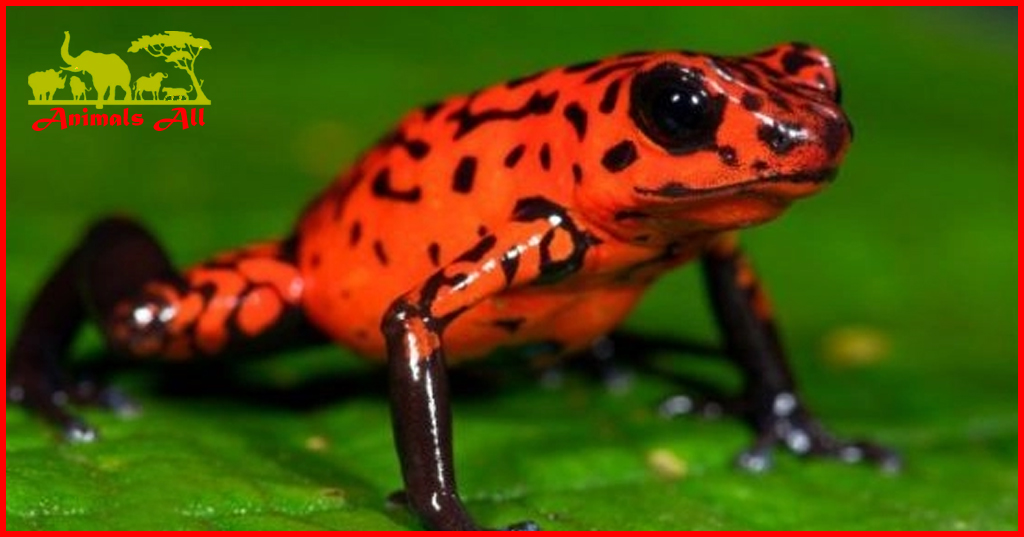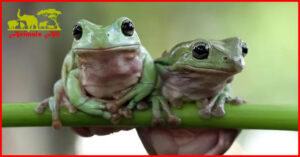
Amazing info of strawberry poison dart frog
The strawberry poison dart frog ( Oophaga pumilio ), also known as the strawberry poison frog, is a species of poison frog in the family Poison Darts . It is a type of poison dart frog in Central America , concentrated in Costa Rica .

Introduction
The strawberry poison dart frog is the most beautiful frog in the world , but also one of the most poisonous species. The toxins in the most poisonous species can kill more than 20,000 mice. They are very small, with the smallest being only 1.5 cm, and some species can reach 6 cm. Poison dart frogs are mainly distributed in tropical rain forests such as
Brazil , Guyana, and Chile . They are brightly colored and their limbs are covered with scales. The lemon yellow color is the most dazzling and prominent. Looking around, it seems to be showing off its beauty, and also like warning the enemy. In addition to humans, poison dart frogs have almost no other enemies.
The strawberry poison dart frog is a single species, but it has a great deal of variation, with over 30 different color morphs. In addition to differences in color, the different morphs differ in habitat, size, vocalizations, and parental care behaviors. The cobalt blue morph is the most well-known. Most morphs average 18-20 mm in length as adults.
The strawberry poison frog’s brightly colored warning sign indicates that it has different toxins on its skin. These toxins give it a foul smell, which repels predators. The poison on the frog’s skin is so strong that it is lethal even to adult humans.
The strawberry poison frog family includes the warty-backed , orange-red, and Willis’ poison frogs. Their closest relatives are the clown poison frogs , which include O. clownii and O. duellmani. Both species care for the eggs and tadpoles they lay.
Oophaga is a new genus created in 2006. Previously, the strawberry poison frog was classified in the genus Oophaga, and this classification is still widely used.
Appearance feature

2-2.5 cm long female frog backs. The female frog takes them to a tree hole filled with water or the heart of a pineapple plant, one tadpole per hole. After that, the female frog returns to the hole regularly and lays unfertilized eggs for the tadpoles to eat. The tadpoles metamorphose into small frogs after about 6 weeks
Blue, etc., and even has variations such as no lines, fine lines, teardrop shapes or map shapes. The strawberry poison dart frog (Dentrobates pumilio) is the most colorful creature in the Panamanian rainforest. The adult body length of this frog is only 2 cm, but the venom secreted from its back is only 0.002 mg, which is enough to kill a person. Because it is extremely poisonous, Native Americans often apply it on arrows and javelins to hunt. The strawberry poison dart frog, which is as bright as a strawberry, is known for its poison, but it takes great care of its offspring. The female frog lays 4 to 6 eggs in the leaf litter at a time. When the eggs hatch into tadpoles, the tadpoles crawl onto the body.
Reproduction and care
In the amphibian world, the strawberry poison frog and related frogs are known for taking great care of their eggs and tadpoles. After mating, the female will lay 3-5 eggs in the veins of a leaf or bromeliad. The male will ensure that the eggs are moistened, using his cloaca to transport water. After the eggs hatch, about 10 days later, the female will carry the tadpoles to a sandy area. On rare occasions, the male will also carry the tadpoles on his back, but whether this is intentional or just coincidental is unknown. The veins of bromeliads are a popular place for strawberry poison frogs to lay their eggs, but they will also lay their eggs in other suitable places, such as tree holes, small mounds of soil, or aluminum cans in human garbage.
Only one tadpole is placed at each site because they are cannibals. Once the tadpoles are placed, the female will come to the site of the tadpoles every few days to lay unfertilized eggs as food. Some studies have tried feeding tadpoles with other foods (such as algae and eggs of other poison dart frogs), but they have been difficult to succeed. It can be seen that they must take care of the tadpoles, otherwise they will have difficulty surviving or growing.
After about a month, the tadpoles metamorphose into froglets, which usually remain in the same place for a few days until their tails completely disappear.
Living habits
They usually choose to lay their eggs on the underside of fallen leaves.
Protection Level
The flower poison dart frog is listed on the World Conservation Union’s Red List of Endangered Species.
Feeding

The strawberry poison frog is a popular pet due to its attractive coloration and unique life cycle. In the 1990s, it was imported into the United States and Europe from various sources. However, since shipping has ceased, the strawberry poison frog has become less common and less of a choice. In Europe, there are a wider selection of different strawberry poison frogs, many of which were smuggled into the country or are descendants of smuggled species. Although smuggled strawberry poison frogs are rare elsewhere, they still kill large numbers of animals and damage habitats. There are now strawberry poison frogs being exported from Central America, which has greatly increased their numbers.
Species
Bastimentos: The Bastimentos species generally come in three forms, red, yellow or white, with black spots on the back and feet. They are found on the Bastimentos Islands in Panama and are believed to be a true genetics to some extent, rather than a hybrid.
Cobalt Blue: Cobalt Blue is relatively rare in the United States. Most of them were introduced to the United States in the 1990s, or are descendants of them. They have a red body and blue limbs. They are generally poor at caring for tadpoles, which may be caused by problems with care and diet. There is now a technology that can transform cobalt blue tadpoles from more common species such as Man Creek or Bastimentos. Cobalt Blue is distributed in Costa Rica and is very abundant.
Chiriqui: Chiriqui are generally green, some are red, and sometimes have yellow bodies with blue-green limbs. Chiriqui are caught in the Chiriqui Grande or the Chiriqui River. Since the exact site is not known, it is difficult to say whether it is the Chiriqui Grande or the Chiriqui River species.
Man Creek: The Man Creek is very similar to the Cobalt Blue and can sometimes be confused with the Cobalt Blue. Some Man Creeks have blue limbs, but you can tell them apart by looking at the eyes. However, Man Creeks generally have gray limbs, and it is not uncommon to have no gray on the forelimbs.
Toxicity
After a series of complex studies, people found out that this frog poison is a steroidal toxin that can disrupt the normal activities of the nervous system. Its main form of action is: when the arrow poison is used inside or outside the axon, it can cause irreversible depolarization of the axon, reduce the amplitude of the potential action, hinder the ion exchange in the animal body, and make the nerve cell membrane a poor conductor of nerve impulses.
In this way, the instructions issued by the nerve center cannot reach the tissues and organs normally, and eventually cause the heart to stop beating, and there is no effective emergency measure. However, the venom of the poison dart frog can only work through human blood. If the finger is not cut, the venom can only cause a rash on the finger at most. But will not kill people. The smart Indians understand this principle. When they catch poison dart frogs, they always wrap their hands with leaves to avoid poisoning.
Indians have long used the poison of poison dart frogs to coat their arrows and spears. They pierce the frogs to death with sharp needles and then put them on fire to dry. When the frogs are heat, the poison oozes out from the glands. Then they rub the frogs back and forth with arrows to make poison arrows. The poison of one poison dart frog can be use to coat fifty darts and arrows. Shooting wild animals with such poison arrows can kill the prey immediately.


One thought on “Amazing info of strawberry poison dart frog”
Comments are closed.